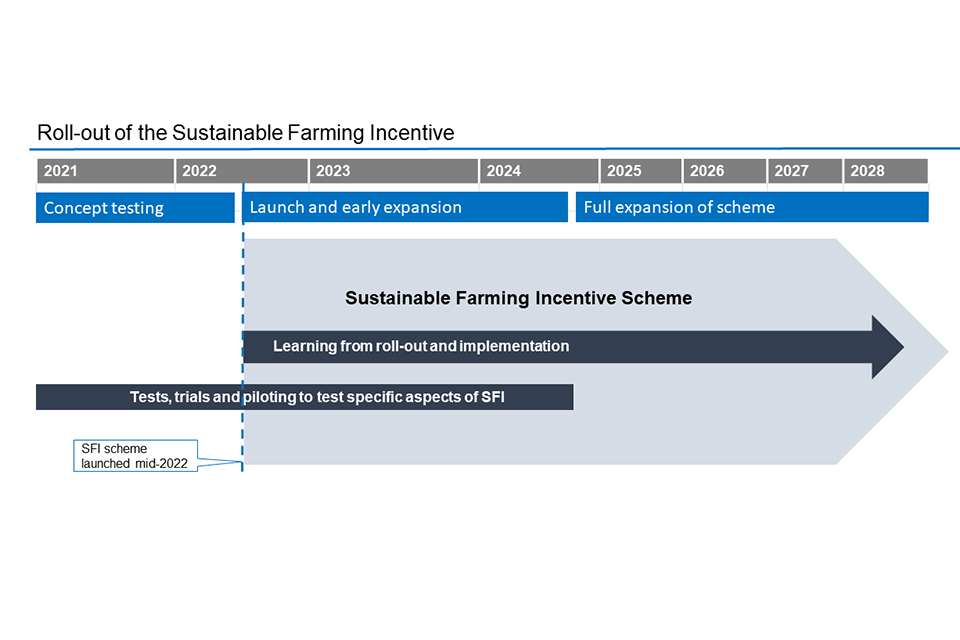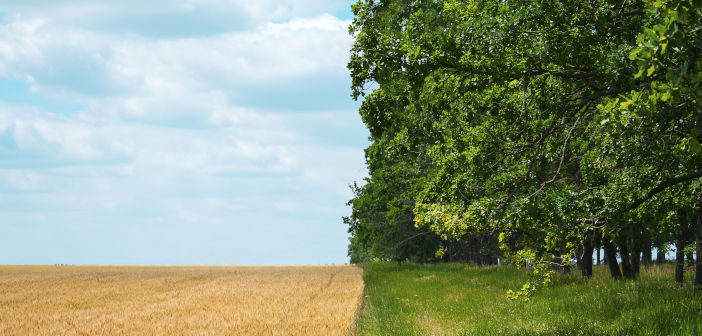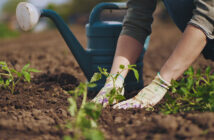Farmers will have a better idea of the monetary incentives available from the Government, in lieu of the Common Agricultural Policy, as details of the Sustainable Farming Incentive were released today.
Land managers and farmers are being encouraged to take part in the scheme, which will be piloted this year, with the Government excepting expressions of interest from the 15th March.
The Sustainable Farming Incentive is one of three schemes to be piloted and co-designed, with details of the Local Nature Recovery and Landscape Recovery schemes to be shared later this year.
These will reward farmers and land managers for producing public goods like biodiversity, cleaner water, cleaner air, improving soil health, and carbon reduction on their hand. The Sustainable Farming Incentive will support approaches to farming that deliver for the environment, such as actions to improve soil health, hedgerows and integrated pest management.
For example, a farmer might be paid to manage and plant hedgerows to provide year-round food, shelter and breeding cover for birds and insects, or take actions to improve organic matter levels in the soil.

Environment Secretary George Eustice
The Environment Secretary, George Eustice, said: “The ethos at the heart of our future policy is to support the choices of individual farm enterprises. The Sustainable Farming Incentive will support the environment and promote animal welfare. It will reward approaches to farm husbandry such as encouraging integrated pest management, improving soil health and enhancing hedgerows.
“Assets that were previously dubbed “ineligible features” will finally have their value recognised and rewarded. I would encourage farmers to engage in this pilot to help us design the new scheme.”
Setting a timeline
Farmers who are interested in taking part in the pilot need to complete a short online form, with successful candidates being invited to complete their application and, if eligible, entering a pilot agreement starting in October 2021.
The initial stage will be open to several hundred farmers, who currently receive subsidies from the Basic Payment Scheme, to reflect England’s broad range of farm types and locations.
Pilot participants will be asked to take part in a range of co-design activities, providing rapid feedback on their experience of all aspects of the process – from pre-application to implementing their agreements. This will ensure the scheme is fully workable and user-friendly once fully rolled out from 2024.
A farmer is eligible for the pilot if they:
- are a recipient of the Basic Payments Scheme, registered on the Rural Payments Agency system
- enter land parcels (fields) into the pilot that do not have an existing agri-environment agreement on them
- have management control of the land for the duration of the pilot. They must either own the land with management control or have a tenancy of enough length to implement their pilot agreement (including landlord’s permission if required)
- enter land parcels that are in England
- enter land parcels that are not common land

Following the piloting phase, the Sustainable Farming Incentive will be rolled out in 2022, ahead of the full launch in 2024.
In the first phase of the pilot, participants will be able to select from an initial set of eight standards on which to build their own agreements. These will promote cleaner air and water and guard against environmental risks such as climate change and flooding. Within each standard, there are three levels for participants to choose from – Introductory, Intermediate and Advanced – these levels become more challenging, with a higher reward rate.
Payments rates for land management actions will be set at a broadly equivalent level to rates under the Countryside Stewardship during the first phase, with an updated payments rate for 2022 currently under consultation.
Farmers who participate in the pilot will continue to receive Basic Payment Scheme payments and can still be in a Countryside Stewardship scheme, as long as these do not involve the same parcels of land.
Below you can see a breakdown of the initial eight standards, along with broad payment rates depending on the level chosen.
| Standard | Initial base rates (first phase of pilot only) |
|---|---|
| Arable and horticultural land standard | from £28 up to £74 per hectare |
| Arable and horticultural soils standard | from £30 up to £59 per hectare |
| Improved grassland standard | from £27 up to £97 per hectare |
| Improved grassland soils standard | from £6 up to £8 per hectare |
| Low and no input grassland standard | from £22 up to £110 per hectare |
| Hedgerow standard | from £16 up to £24 per 100 metres |
| On farm woodland standard | £49 per hectare |
| Waterbody buffering standard | from £16 up to £34 per 100 metres |
Local Nature Recovery and Landscape Recovery
Defra will release details of the remaining two schemes later this year, but in broad terms, the Local Nature Recovery scheme will pay for actions such as creating, managing or restoring habitats, natural food management and species management.
The Landscape Recovery scheme will focus on landscape and ecosystem recovery through projects looking to achieve large-scale forest and woodland creation, peatland restoration or the creation and restoration of coastal habitats such as wetlands and salt marsh.
Details of these schemes were set out in Defra’s Agricultural Transition Plan and in the Farming is Changing booklet, published in November 2020.
More details of the Sustainable Farming Incentive can be found on the Defra website.




